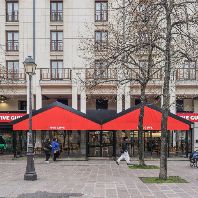DTZ Research expects increased investor focus on value-add opportunities in larger, mature European shopping center markets in 2011 and 2012, according to its latest Property Times European Shopping Centre report. With limited further yield compression expected across these markets, retail investors are concentrating on increasing the income of their assets whilst at the same time avoiding the risks associated with new shopping center openings.
Consequently, there will be an increase in refurbishments and redevelopments of existing, secondary centers. This redevelopment potential is estimated to apply to 12 million m² of shopping center stock in France and Germany alone, representing half the existing stock.
The prime retail sector, and shopping centers in particular, have proved relatively resilient during the downturn. The retail sector accounted for 34% (31.3 billion) of total European investment in 2010, its highest relative level for at least a decade. Investment in shopping centers reached 12 billion in 2010, compared to a modest 6.5 billion in 2009 and approaching levels seen during the peak of the market between 2004 and 2006.
Magali Marton, Head of DTZ CEMEA Research said: "Prime yields for shopping centers across the major European markets have been falling since the end of 2009. Prime yields currently stand at 6% in France, Germany and the UK, and between 6% and 7% in the other major markets. We expect only very limited further yield compression in the medium term. Consequently, we expect investor interest to be driven by income returns, rather than capital growth. Redevelopments and refurbishments of existing secondary centers offer investors the ideal opportunity to generate new revenue and improve existing centers' current rental cash flows."
As well as seeing an increase in refurbishments and redevelopments of existing assets, DTZ Research forecasts that 13 million m² of new shopping center stock will be delivered in Europe by the end of 2012. This is nearly quadruple the estimated 3.5 million m² delivered across Europe in 2010. The new supply will be concentrated in Eastern and Central Europe, particularly Russia and Turkey, where existing stock is forecast to increase 30% by the end of 2012. In 2011, 2.1 million m² and 2.8 million m² are planned for delivery in Russia and Turkey respectively.
There was 120 million m² of shopping center in Europe at the end of 2010, covering approximately 6,500 schemes. Western Europe accounts for more than 90% of existing stock, and Central and Eastern Europe only 10%. Turkey and Central and Eastern European countries have well below the European average of shopping center stock per thousand of capita, which stands at 238 m² per 1,000 of capita. Turkey, Romania and Russia have shopping center stocks of 54 m², 56 m² and 60 m² per thousand of capita respectively. A shortage of stock coupled with the highest average GDP and retail sales growth rates forecasts in Europe over the next five years, explains the strong recovery in the development pipeline in these countries.
Hans Vrensen, Global Head of DTZ Research, said: "Shopping center investment has been relatively limited in Turkey, Central and Eastern Europe to date, accounting for only 4% of total shopping center investment in Europe in 2010, due to limited stock. However, we expect to see increased investment activity in these countries over the next two years as development activity increases significantly to meet consumer-driven retailers' demand for space."
Western Europe is expected to see minimal new shopping center development in 2011 and 2012. Many Western European countries, including Sweden, Ireland and the Netherlands have a relative over-supply of shopping center stock. Others, including the UK, France and Italy are close to the European average of 238 m² of stock per thousand of capita. Together, the UK, France and Germany account for 50% of total European shopping center stock.
The European retail investment market is characterized by a wide range of investors, pursuing differen















